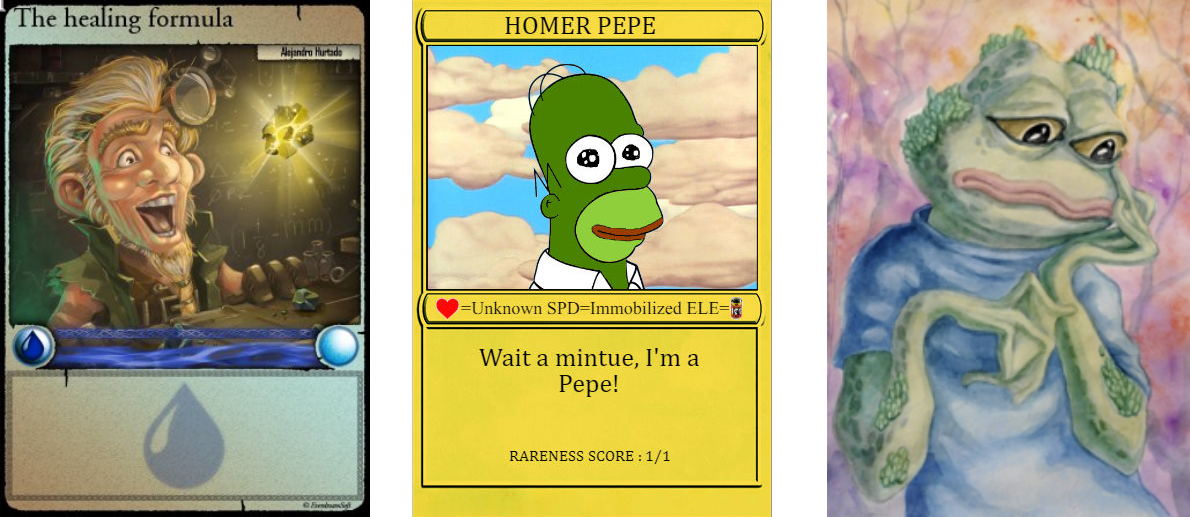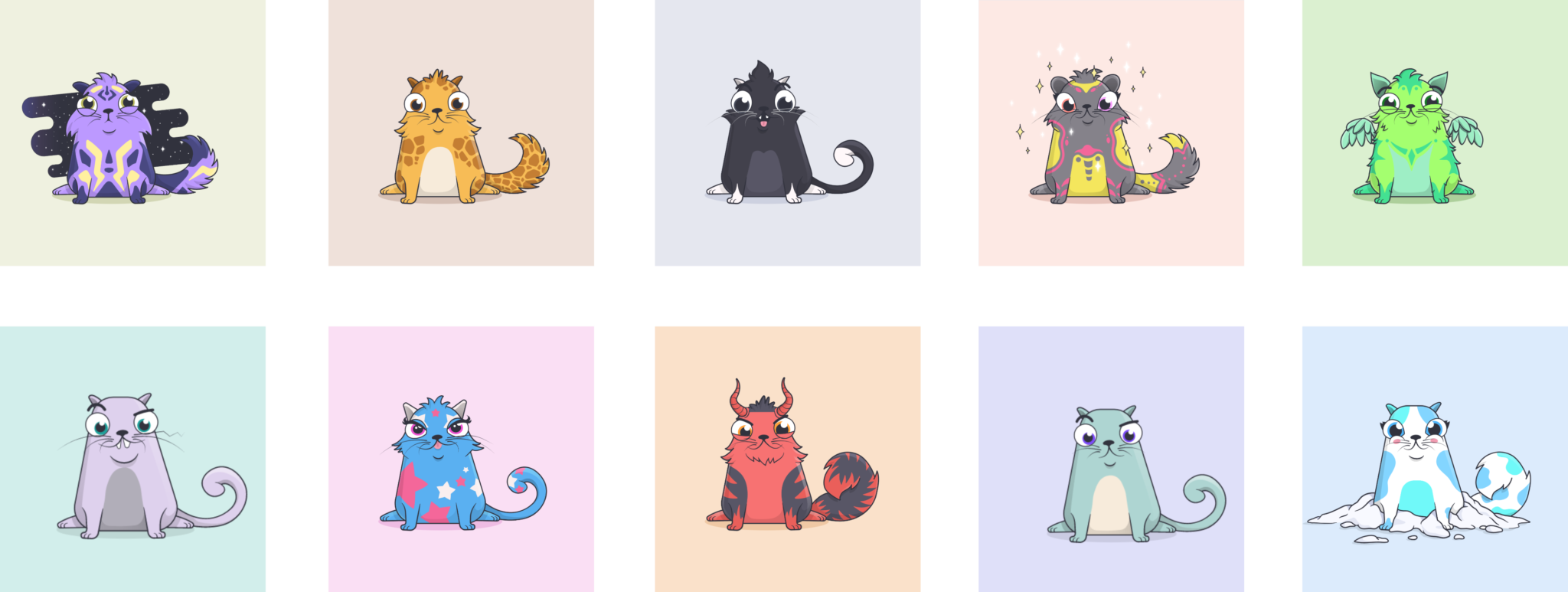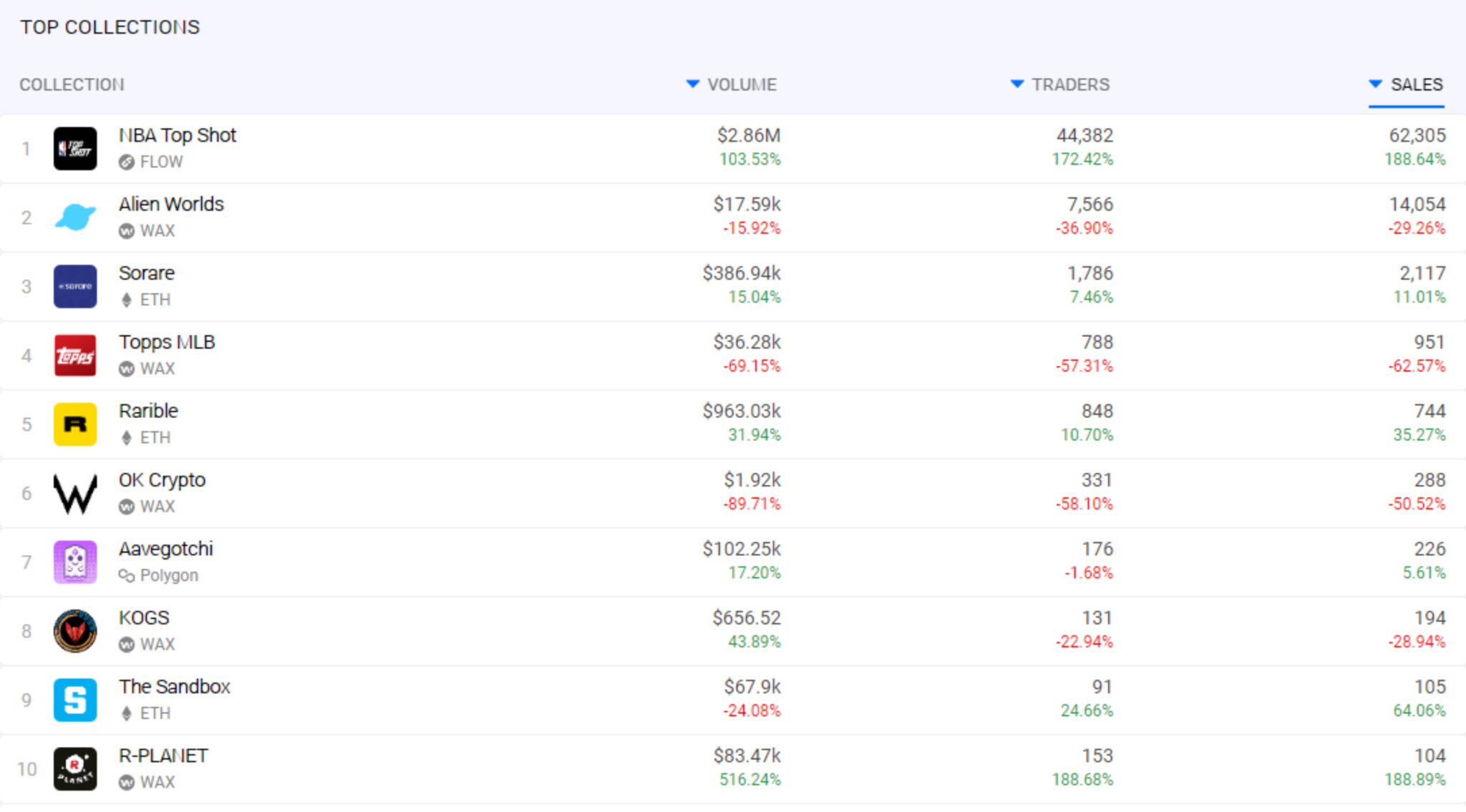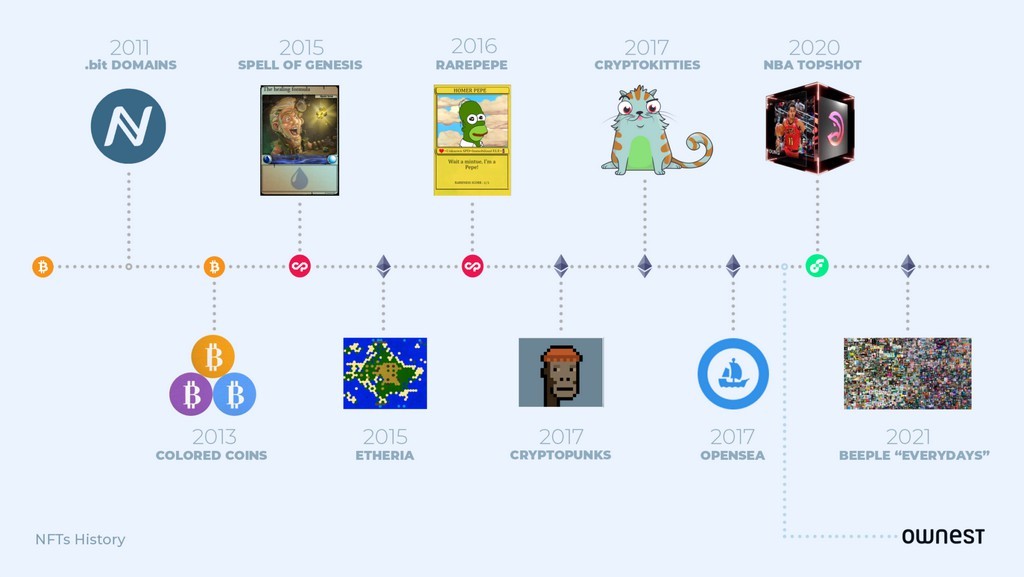The story of NFTs starts long before the term itself appears and becomes the hot topic of the moment. We will explain how from Satoshi to Beeple, NFTs appeared and then became a phenomenon.
I - Before NFTs (2011 - 2017)
An NFT is a non-fungible token, i.e. a unique digital object. This notion of uniqueness came about with the very arrival of Bitcoin.
Namecoin, the precursor
Indeed, the Bitcoin blockchain - a notion first mentioned by Hal Finney in 2010- allows one to prove the existence of a piece of data by time-stamping it with certainty.
This makes it possible to keep a record of data in Bitcoin that is certain to be unique. Members of the community have therefore considered using this principle for domain names. The project that started as BitDNS was born as the very first "Alternative Bitcoin” ever: Namecoin.
This coin, supported by Satoshi and Hal Finney, allows to keep a registry of .bit domains, still functional today (and precursors to ens domains and other projects of this kind).

To do that they introduced the possibility to embed data in a Namecoin transaction. This gave the idea of Monegraph that can be now seen as the pioneer project of crypto art.
From Colored coins to Counterparty
That desire to use Bitcoin for more than just ‘bitcoin’ eventually led to Colored Coins. The idea was to add metadata to Bitcoin transactions that correspond to a state for a token, using the blockchain as a registry.
This idea of "colored coin" was implemented through many protocols, like OpenAssets, ChromaWay or Colu. However the main projects were Mastercoin and Counterparty, which improved over the base protocol and made it easy to create tokens and track them through a dedicated explorer.
Mastercoin (now Omni) - the first ICO - was the platform used to create the first stablecoin (USDT), and several other tokens still in use today. On the other hand, Counterparty, was created in a decentralized manner by a community and without an ICO. The way in which it was created has had a great influence on the projects that have been developed thereafter.
Rarepepes and the birth of CryptoArt
As the creation of tokens on Counterparty wasn’t restricted, many experiments were made on the protocol. It gave birth to the first 'social' tokens (such as Adam Levine's), the first video game cards with Spell of Genesis (With FDCARD, the first cryptocard and “NFT” as we know it), and the first real CryptoArt project with the Rarepepes.
The Rarepepes project started in 2016 with the simple will to make collectible memes based on Pepe the frog and the topic of crypto, to do true "rare" pepes. As these cards met with growing success, many card proposals poured in, and artists eventually submitted their own cards.

This resulted in more than 1700 different cards, some unique like HOMERPEPE, made by more than 200 artists. Some of the artists did not stop there, and in the following years they became cornerstones of what is now called CryptoArt.
II - Emergence of NFTs on Ethereum (2017 - 2018)
A participant in the Mastercoin project thought in 2014 that it should be possible to make more than “just tokens” on the Bitcoin blockchain. Faced with the project creator's refusal to evolve, Vitalik Buterin then decided to go on his own way and created what will be the ciment of the NFT revolution: Ethereum.
The first "NFTs": Etheria & Cryptopunks

Ethereum was launched in August 2015 with the intention of becoming the "world computer", thanks to a novelty: "smarts contracts". These programs allow you to create just about any application you want in a decentralized way.
This gave ideas to creatives people, and the first project that could be associated with the notion of NFT is Etheria (2015). This project proposed a virtual world where one could buy pieces of land and build what one wants on them. These unique pieces of land are precursors to NFTs on Ethereum and Etheria is the ancestor of projects like Cryptovoxels or Decentraland.
It took some time afterwards though to see real "NFT" projects on Ethereum, this platform being for long considered in 2016-2017 as a playground for ICOs. The project Cryptopunks, in the summer of 2017, marks a first turning point by proposing 10000 avatars all unique and is today considered as the first real NFT project on Ethereum.
Ethereum: from the ERC20 token to the ERC721
The first years of Ethereum were mainly devoted to the creation of fungible tokens for ICOs and decentralized applications, grouped under a standard: the ERC20.
But the emergence of projects requiring a non-fungible token/asset also prompted thoughts of creating a new standard for this type of object. In September 2017, Dieter Shirley proposed a new ERC standard for "non-fungible tokens" or "NFTs."
He defined his choice of the term token "as the best of the bad options":
I did spend some time trying out other alternatives ("item", "object", "thing", etc.), but none seemed right. I am happy to hear other suggestions because I am not entirely happy with "token". It just seems like the best of some bad options.
This new standard will then be used in December 2017 by its creator for the game he co-created: CryptoKitties.
The CryptoKitties phenomenon

CryptoKitties really marks the start of the NFT phenomenon. This game launched on December 2, 2017 proposes to collect cats with their own characteristics on the blockchain and to mate them to create new unique cats, then inheriting some of the characteristics of their parents.
This game takes advantage of its launch in the midst of the increase in price - and popularity - of Bitcoin and becomes a real phenomenon. CryptoKitties trade at very high prices (>$100k), are talked about in the New York Times and even make the Ethereum blockchain almost unusable at times with the pressure of its very large user base activity.
This success will then lead to an explosion of applications using non-fungible tokens (games, collections, arts, ...) and to the name associated with that new ERC721 standard, the Non-Fungible Token, or NFT.
III - Towards the general public (2018-2021)
From CryptoKitties and the popularization of the ERC721 standard, NFTs then developed at a rapid pace on the Ethereum blockchain, and other blockchains inspired by it.

NFTs marketplaces
As of 2018 many projects using NFTs have developed on Ethereum, on various domains, from video games to art, through virtual worlds.
All these NFTs can be exchanged, but it remains complex if one has to connect to a marketplace for the application in question each time. This is where the marketplace Opensea (Dec 2017), the first of its kind and the leader in the sector, comes in and allows anyone to list their NFTs and buy them.
This simplicity has led to democratization and greater liquidity for these unique digital objects.
NBA topshot and alternative blockchains
One of the findings of the creators of CryptoKitties was that Ethereum was not capable of supporting popular games without seeing the price of its use explode. So these founders decided to create their own Flow blockchain with their company DapperLabs.
Other blockchains have also specialized in the field, such as Enjin, or more recently Wax, which has managed to obtain numerous partnerships with well-known companies such as Atari.
But the alternative blockchain to Ethereum that holds the top spot is clearly Flow, from the creators of CryptoKitties, thanks to NBA topshot. These NFTs of unique mini-videos of notable NBA game action are snapping up and are regularly the #1 NFT project in terms of volume.

CryptoArt and Beeple explosion
The only project that managed to beat NBA Top Shot in term of sales is the old-timer, Cryptopunks. The latter being seen as the first CryptoArt NFTs to be collected on Ethereum, the price of a few Cryptopunk has sometimes exploded to several million dollars.
This field of CryptoArt really started on Ethereum via closed platforms like KnownOrigin (2018) or SuperRare (2018). Since 2020, and the emergence of open marketplaces like Rarible, and others pushed by crypto giants, like Gemini's NiftyGateway, the field has experienced a strong surge, in price and demand.
The inflection point was Christie's auction of NFTs works by the - already well-known - artist Beeple, which reached $69m. This resulted in the whole world discovering the field, with mentions of the NFT phenomenon in newspapers and TV, all over the world.

Conclusion: What's Next?
We have seen how, starting from a rather vague notion at the beginning - a data inclusion in a blockchain - NFTs ended up finding a definition on Ethereum, before exploding as "the original version of a digital work" in the eyes of the world.
But its future is even brighter, as we can look beyond the realms of art or gaming, as NFTs can change a lot of things about our daily lives, turning what is common - digital data - into something rare.
![Cdiscount 2022 04 01 174830 mhxm]()
![Scnfbis]()
![Saint Laurent]() Company
Company



